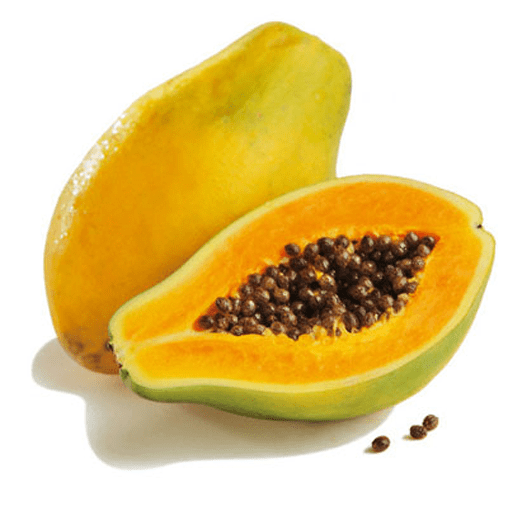 Papaya is sold all year round, especially in the south, and is not very expensive. It has a sweet smell and offers various minerals and vitamins, such as vitamin A and C.
Papaya is sold all year round, especially in the south, and is not very expensive. It has a sweet smell and offers various minerals and vitamins, such as vitamin A and C.
In the south, one of the popular varieties of papaya is the one with red, thick pulp that has a fragrance but that does not contain much sugar. This species is grown in the Mekong Delta region and in the area close to the Cambodian border. Another species of papaya available in the south is the one with yellow or orange peel.
Papayas are not as abundant in the north. Because of the colder climate, fruits take a longer time to ripen.
Fruits 
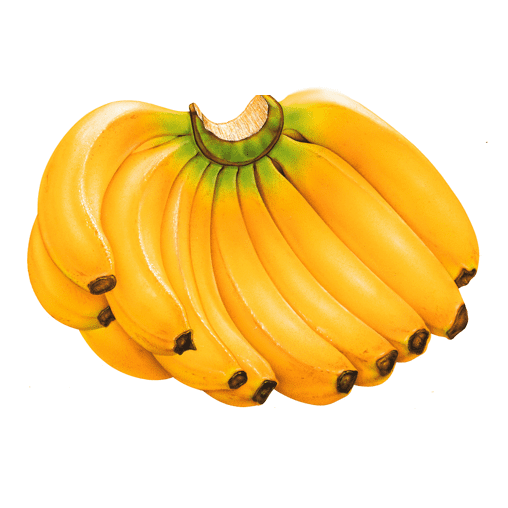 Bananas offer various mineral substances and energy. Bananas are not only a delicious fruit when ripe, but green bananas are also part of some dishes. Banana flower is mixed in delicious salads. Banana tree trunks, when young, can be eaten as a vegetable, and banana tree roots can be cooked with fish, or mixed in salads.
Bananas offer various mineral substances and energy. Bananas are not only a delicious fruit when ripe, but green bananas are also part of some dishes. Banana flower is mixed in delicious salads. Banana tree trunks, when young, can be eaten as a vegetable, and banana tree roots can be cooked with fish, or mixed in salads.
Several banana varieties grow all over the country. Tieu bananas are the most popular kind; they are small and smell sweet when ripe. Ngu and Cau bananas are small with a thin peel. Tay bananas are short, big, and straight, and can be fried or cooked in meals. Tra Bot bananas are widely planted in the south; their peel is yellow or brown when ripe with a white pulp. When Tra Bot bananas are not ripe, they taste sour. In the Southeast, there are a lot of Bom bananas. They look like Cau bananas, but their peel is thicker and their pulp is not as sweet.
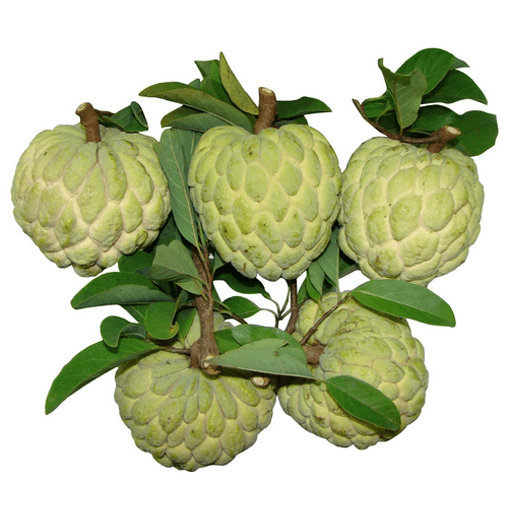 In Vietnam, there are two kinds of custard apple: firm and soft. Both varieties can have various shapes, for example they can be round or oval. When a custard apples is ripe, it is easy to peel. The peel is thick, green, and covered with white or green pollen. The pulp is white or light yellow and contains many black seeds.
In Vietnam, there are two kinds of custard apple: firm and soft. Both varieties can have various shapes, for example they can be round or oval. When a custard apples is ripe, it is easy to peel. The peel is thick, green, and covered with white or green pollen. The pulp is white or light yellow and contains many black seeds.
In the south, custard apples ripen in July, but not all at the same time. Firm custard apples are densely grown in the south, mainly in NinhThuan and Vung Tau. Xiem custard apples are oval or heart shaped. Their peel is green with thorns, which turn black when the fruit is ripe. The fruits are generally big and can reach 1.5 kg. The pulp is white, hard, and a bit sour.
Custard apple trees deliver fruit after three or four years of growth. A tree produces on average from 50 to 100 fruits per year. The fruit ripens on the tree and then cracks, especially during the rainy season.
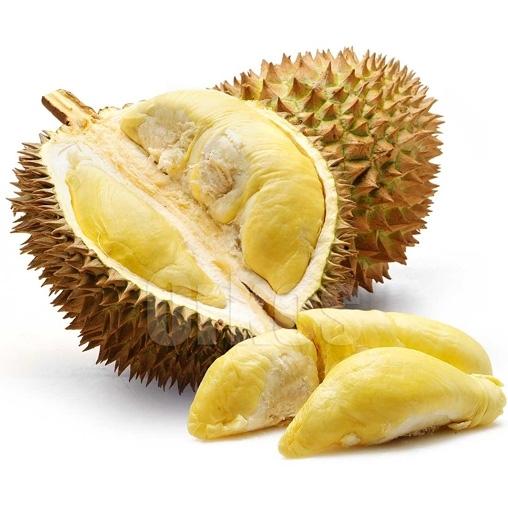 You may wonder why this fruit has to bear such an austere name as "saurieng" (one's own sorrows). If you are curious enough, travel to the orchard province in southern Vietnam, where the locals are likely to recite the immortal love story.
You may wonder why this fruit has to bear such an austere name as "saurieng" (one's own sorrows). If you are curious enough, travel to the orchard province in southern Vietnam, where the locals are likely to recite the immortal love story.
Long ago, there was a young couple that lived in the region. Because of social prejudices that could not be overcome, the couple sought their own deaths in order to be faithful to each other. Their own sorrows received the population's sympathies, and the story of their tragedy has been handed down from generation to generation. To commemorate the couple, the locals have named one of their most valuable fruits saurieng.
Durian is an expensive fruit. One Durian fruit is five to six times larger than a Mango. Its skin is thick, rough, and covered with sharp thorns. With a gentle cut between the edges of the outer shell, you can easily open the fruit to expose the layers of bright yellow segments of meat that make the pulp look like it is covered with a thin layer of butter.
Literature writer Mai Van Tao once wrote about the particularly good smell of the Durian. He wrote, "The dense fragrance which spreads near and far, lingers a long time before disappearing. The strong smell can go straight to your nostrils, even though you are still several meters away from the fruit. The fragrance of Durian is a mixture of smells which come from a ripening jackfruit and that of a shaddock. It can also be compared to the strong smell of foreign-made cheese and is rich as a hen's egg. Others describe the fruit as sweet as well-kept honey. All things considered, Durian has a special tempting smell. Those who have not enjoyed the fruit before may find it hard to eat. But once they have tried it, they are likely to seek it again."
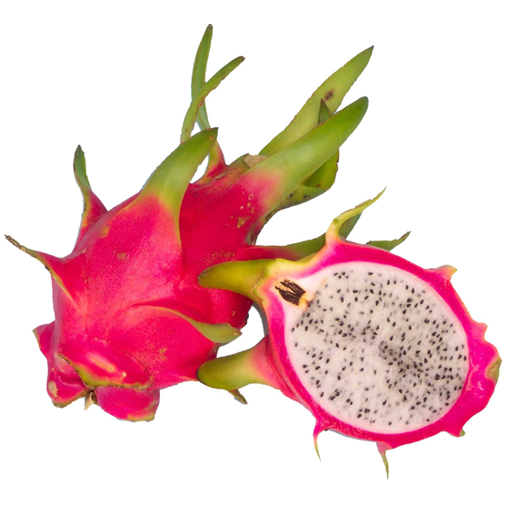 Green dragon is the name of a newly cultivated fruit. It is rather big, weighs from 200 to 500 grams, and has pink or dark-red colour. The ripe fruit looks like the kohlrabi cabbage and has an oval shape.
Green dragon is the name of a newly cultivated fruit. It is rather big, weighs from 200 to 500 grams, and has pink or dark-red colour. The ripe fruit looks like the kohlrabi cabbage and has an oval shape.
When ripe, the fruit peels as easily as a banana. Its pulp is white and gelatinous. The pulp contains many seeds that cannot be extracted. The seeds taste like cactus, giving the fruit a sweet and sour taste.
Before 1945, green dragon fruits were not sold in southern markets. It is said that Americans brought green dragon fruits to the south. From PhanThiet to NhaTrang or from NinhHoa to Buon Ma Thuot, bushes of green dragon fruits can be seen climbing to tree trunks in gardens and even on doors.
Different from any other southern fruit, its harvest season is particular; fruits become available in markets in October, November, April, and May. They are more expensive in October and April, since there are smaller quantities available.
 Jackfruits contain a lot of sugar and calories. They grow on every part of the tree: the trunk, branches, and even on the roots.
Jackfruits contain a lot of sugar and calories. They grow on every part of the tree: the trunk, branches, and even on the roots.
Jackfruit trees bear approximately 150 to 200 fruits per year. When the fruit are ripe, their pulp is yellow and sweet, containing a lot or little juice depending on the species. Jackfruits without seeds are planted densely in the Mekong Delta region.
To nu jackfruits are small and come from a short tree. The flesh of ripe fruit is firmly stuck to the core; when eating a jackfruit, simply hold the core and pull it out. In the south, the to nu jackfruit harvest season starts from March to June. There are several other species of jackfruits divided into two main groups: hard jackfruits with hard and crunchy flesh, and soft jackfruits with soft flesh and a lot of juice.
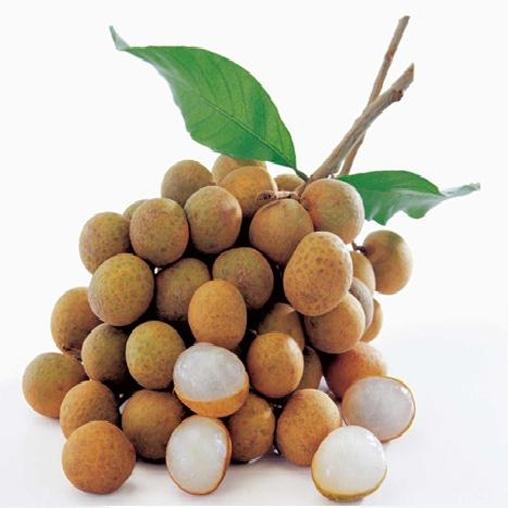 Longan trees are grown in larger numbers in the northern provinces than in the southern region. The most famous Longan comes from former Hung Yen province. In the old days, Hung Yen Longans were among the food items reserved as tributes to the Kings.
Longan trees are grown in larger numbers in the northern provinces than in the southern region. The most famous Longan comes from former Hung Yen province. In the old days, Hung Yen Longans were among the food items reserved as tributes to the Kings.
The fruit is as small as the tip of a thumb. Inside the thin and light brown skin is the transparent white pulp which covers a small glossy black seed. The thicker the pulp, the juicier, more fragrant, and crisp the pulp.
Longan is a protein rich fruit. It is usually used as a main ingredient, along with lotus seeds, to make sweet soup, which is considered a very good summer refreshment. The seedless longan, when dried, is also a very fine choice for connoisseurs.
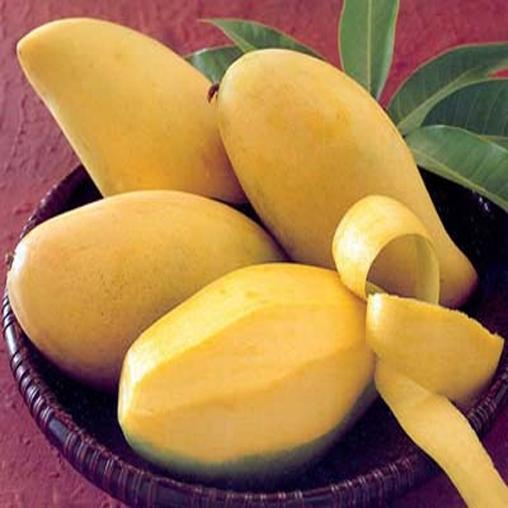 Mangoes, xoai in Vietnamese, are grown in most southern provinces. The most reputed mangoes come from Cao Lanh District in Dong Thap Province.
Mangoes, xoai in Vietnamese, are grown in most southern provinces. The most reputed mangoes come from Cao Lanh District in Dong Thap Province.
Mangoes are divided into several kinds, known locally as xoai cat, xoaituong, xoaixiem and xoaingua to cite just a few. The finest mangoes are xoai cat. This type of fruit has a bright yellow peel, a round shape, and weighs as much 0.5 kilograms. The meat is considered sweeter and more fragrant than that of other varieties.
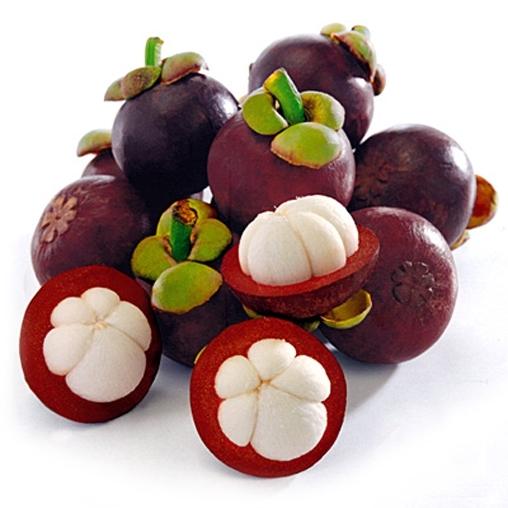 The name and the shape of this fruit does not look attractive to those who first see it. The fruit is a bit smaller than a tennis ball and has a dark violet rough skin. When you peel off the upper part of the fruit with a small sharp knife, you can see the transparent white pulp inside arranged in equal segments. While lifting each segment of the transparent white meat to your mouth you can imagine the light and pure refreshment that leaves a little sour taste lingering in your mouth.
The name and the shape of this fruit does not look attractive to those who first see it. The fruit is a bit smaller than a tennis ball and has a dark violet rough skin. When you peel off the upper part of the fruit with a small sharp knife, you can see the transparent white pulp inside arranged in equal segments. While lifting each segment of the transparent white meat to your mouth you can imagine the light and pure refreshment that leaves a little sour taste lingering in your mouth.
 Papaya is sold all year round, especially in the south, and is not very expensive. It has a sweet smell and offers various minerals and vitamins, such as vitamin A and C.
Papaya is sold all year round, especially in the south, and is not very expensive. It has a sweet smell and offers various minerals and vitamins, such as vitamin A and C.
In the south, one of the popular varieties of papaya is the one with red, thick pulp that has a fragrance but that does not contain much sugar. This species is grown in the Mekong Delta region and in the area close to the Cambodian border. Another species of papaya available in the south is the one with yellow or orange peel.
Papayas are not as abundant in the north. Because of the colder climate, fruits take a longer time to ripen.
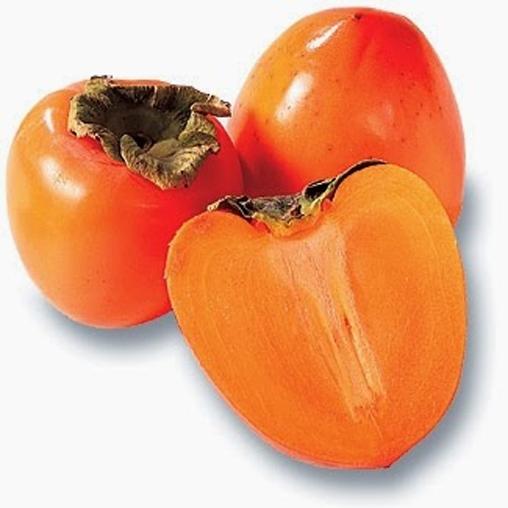 Vietnam has many kinds of persimmon such as my, with yellow fruit and cado with small fruit. Persimmon is famous for providing a lot of sugar and vitamin A. Persimmon fruits contain as much vitamin C as oranges and tangerines, and their pulp does not have a sour taste.
Vietnam has many kinds of persimmon such as my, with yellow fruit and cado with small fruit. Persimmon is famous for providing a lot of sugar and vitamin A. Persimmon fruits contain as much vitamin C as oranges and tangerines, and their pulp does not have a sour taste.
Persimmon can be either round or in the shape of a heart. Persimmon fruits are divided into two kinds: bitter and sweet. Bitter persimmon fruits are edible when they are green and hard, but is very sweet when the fruit is ripe. The fruit of sweet persimmon are always sweet, even when green and hard.
In the north, persimmon is grown widely; the most popular varieties include Lang persimmon in Lang Son and Hac persimmon in Hac Tri. In the south, persimmon can only be planted in the highlands of Dalat.
In Oriental medicine, persimmon is considered effective to reduce high blood pressure and relieve abdominal pain. Persimmon trees can be trimmed into ornamental trees. When their leaves fall down, fruits still hang onto the branches.
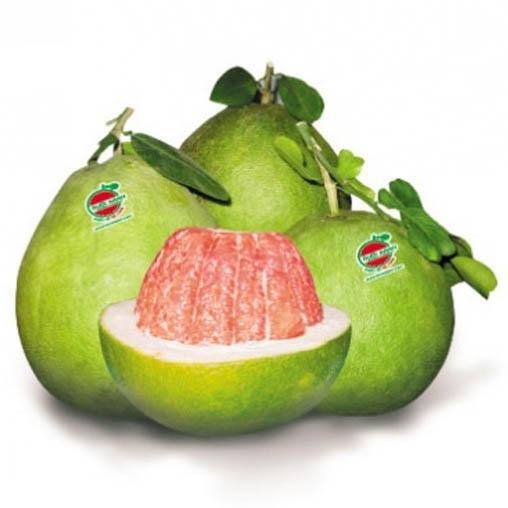 There are several kinds of regional polemo growing areas famous for their particular taste; each fruit is named after the locality where it is grown. These polemo include buoi Doan Hung, buoi Phuc Trach, buoi Bien Hoa, and buoi Thuan Hai, to cite just a few.
There are several kinds of regional polemo growing areas famous for their particular taste; each fruit is named after the locality where it is grown. These polemo include buoi Doan Hung, buoi Phuc Trach, buoi Bien Hoa, and buoi Thuan Hai, to cite just a few.
On the way from Hanoi to Ho Chi Minh City by train, you are sure to stop at Phuc Trach Station in Huong Pho District on the central coast. One of the few food specialties offered to passengers by local vendors are the polemo, commonly called buoi Phuc Trach. The strong fragrance the fruit boasts will likely ensure that you never forget the name of the fruit.
When the polemo is eaten, its slightly sweet taste lingers in the mouth and at the same time helps connoisseurs feel energetic.
The Phuc Trach polemo has been widely famous in the country after it was awarded a medal at a national fruit fair organized in 1938. Phuc Trach polemos are also exported to Hong Kong. The Far East Economic Review remarked: "In Vietnam's central coast there is a particularly delicious polemo. Kept after a while, the juice in the polemo segments becomes muddy, as if some sort of sugar in itself. "
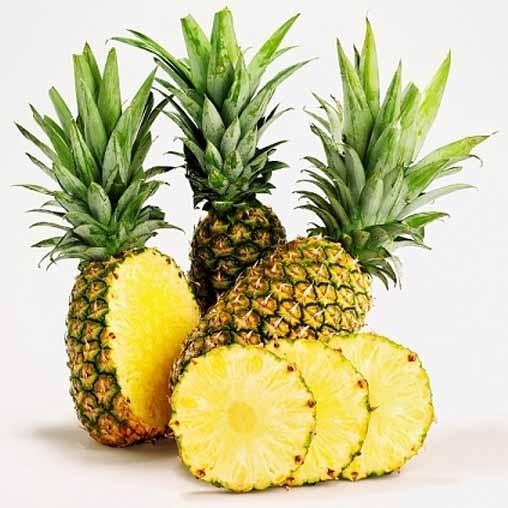 Pineapple plants are widely grown in the country. The peak ripening time for this tropical fruit coincides with summer when the hours of sunshine are longer. People in southern Vietnam usually call this tropical fruit traithom (fragrant fruit), which is literally a precise quote for the fruit since anyone who takes their first bite can surely notice the strong sweet smell. Since the smell of the pineapples lingers longer than that of some other fruits, connoisseurs find it difficult to forget.
Pineapple plants are widely grown in the country. The peak ripening time for this tropical fruit coincides with summer when the hours of sunshine are longer. People in southern Vietnam usually call this tropical fruit traithom (fragrant fruit), which is literally a precise quote for the fruit since anyone who takes their first bite can surely notice the strong sweet smell. Since the smell of the pineapples lingers longer than that of some other fruits, connoisseurs find it difficult to forget.
Pineapples are processed into different products such as canned pineapple, pineapple liquor, sweet preserved pineapple liquor, and sweet preserved pineapple. There is also a special juicy drink that exists only in pineapple growing areas. Growers press the fruit into a juice which is then mixed with the yoke of a hen's egg before being thoroughly stirred together to become a muddy drink. The drink is said to be very sweet, creamy, and nutritious.
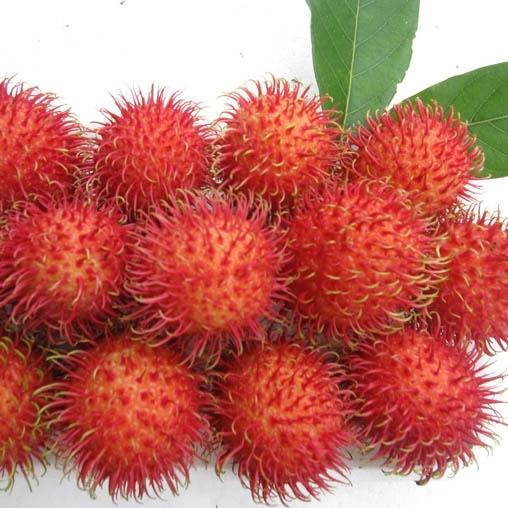 A rambutan tree has broad foliage and many branches. In the southern provinces, the tree yields fruit at the beginning of the rainy season . The chomchom fruit season lasts until the end of the rainy season (from May to October).
A rambutan tree has broad foliage and many branches. In the southern provinces, the tree yields fruit at the beginning of the rainy season . The chomchom fruit season lasts until the end of the rainy season (from May to October).
The skin of this fruit is tough, thick and hairy. Its meat is transparent white and tender, and has a cool sweet taste in the mouth. The most reputed rambutan fruit nation-wide is grown in BinhHoaPhuoc village in Long Ho district in Vinh Long province, some 5Okm north of Ho Chi Minh City. During the rambutan season one can notice the typical bright red colour of rambutan fruit stands located in the markets, along road and at intersections throughout the southern provinces.
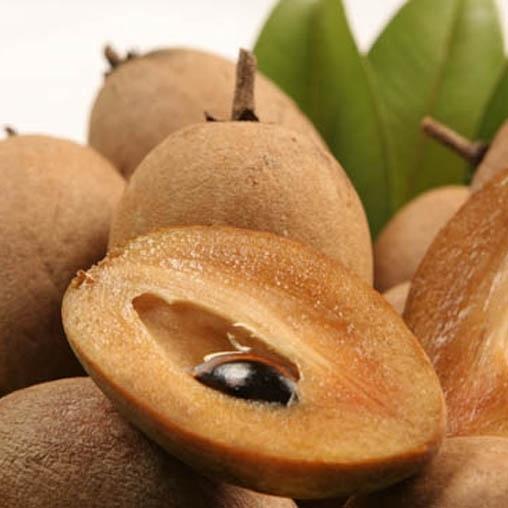 Sapodilla was imported to Vietnam a long time ago. In the last 20 years, sapodilla has been widely planted in the north, where it grew for the first time in XuanDinh, TuLiem district, Hanoi.
Sapodilla was imported to Vietnam a long time ago. In the last 20 years, sapodilla has been widely planted in the north, where it grew for the first time in XuanDinh, TuLiem district, Hanoi.
Sapodilla fruit is shaped like an egg and weighs from 10 to 200 grams. Its peel is brown with tiny cracks near the stalk. The pulp, which is brown and yellow, is very juicy and smells very sweet. When it is not ripe, it is not edible because it contains a lot of sticky resin.
There are two popular species of sapodilla grown in Vietnam: orange pulp and white-yellow pulp sapodilla. The orange pulp sapodilla is planted in the north on the highlands. The pulp of the white-yellow sapodilla is light yellow or yellow and the peel is green or yellow. The peel is thin; the pulp is soft and has taste of peach, banana, and apple.
Sapodilla flower consecutively bloom in bunches so that it has fruits to offer throughout the year.
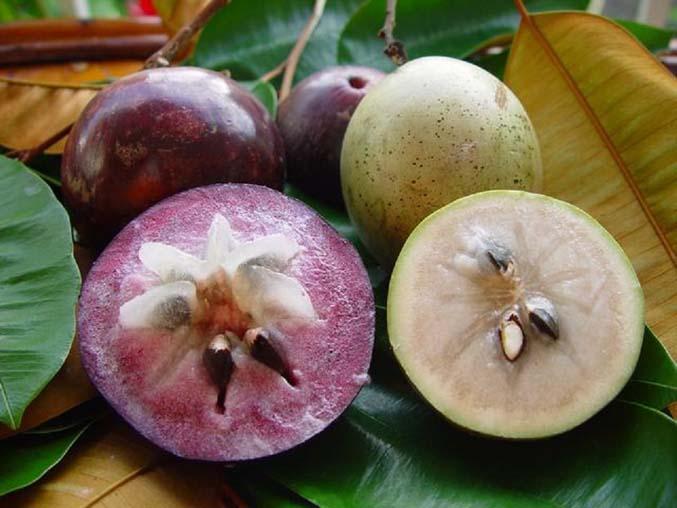 No better word than marvelous can be used to praise the tropical fruit with the name Vu Sua (milk from the breast). Upon entering a star apple orchard, the most famous located in Can Tho Province in the Mekong River Delta, visitors can see for themselves the hundreds of star apples suspended from the branches. The round smooth fruit are all of equal size. The shape of the star apple matches the name attached to it, as does its juice which is fragrantly sweet and milky white like breast milk.
No better word than marvelous can be used to praise the tropical fruit with the name Vu Sua (milk from the breast). Upon entering a star apple orchard, the most famous located in Can Tho Province in the Mekong River Delta, visitors can see for themselves the hundreds of star apples suspended from the branches. The round smooth fruit are all of equal size. The shape of the star apple matches the name attached to it, as does its juice which is fragrantly sweet and milky white like breast milk.
If visitors are unfamiliar to the region, they can be guided by locals on how to enjoy the fruit. A novice will certainly peel the fruit with a sharp knife, which may cause the precious juice inside to be wasted. When using a knife to cut the fruit, it is advisable to cut the fruit into two parts before using a spoon to scoop out the pulp, bit by bit, until nothing is left.
The most popular way to enjoy the fruit by orchard owners is to eat the whole fruit. People tend to drill a small hole at the top of the fruit, lift it to their mouths, lean their heads backward, and drink the flow of the fragrant juice as a baby sucks milk from its mother's breast. One thing you should remember before taking in the juice is that you must squeeze the tough fruit until it becomes tender so that the juice mixes with the meat of the fruit to become a sweet and fragrant muddy substance that looks like breast milk.
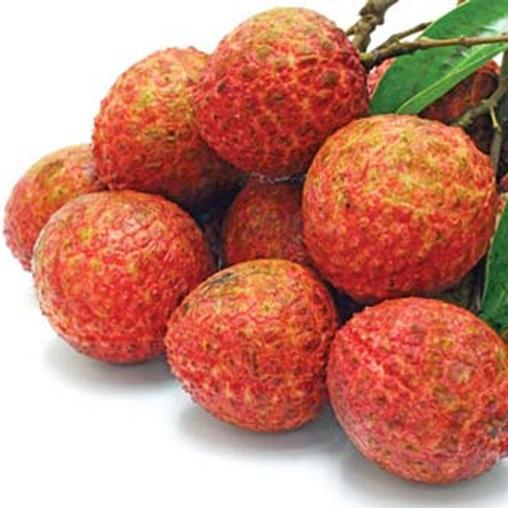 Thieu is the name dedicated to a special kind of litchi grown in Hai Duong Province. The Thieu Litchi is a bit bigger than the longan. Unlike the skin of the longan, which is rather smooth, the dark red skin of the litchi is rough and rippled.The meat of the litchi is also transparent white, but it is thicker and juicier than that of a longan. The litchi seed is also smaller than the longan seed.
Thieu is the name dedicated to a special kind of litchi grown in Hai Duong Province. The Thieu Litchi is a bit bigger than the longan. Unlike the skin of the longan, which is rather smooth, the dark red skin of the litchi is rough and rippled.The meat of the litchi is also transparent white, but it is thicker and juicier than that of a longan. The litchi seed is also smaller than the longan seed.





